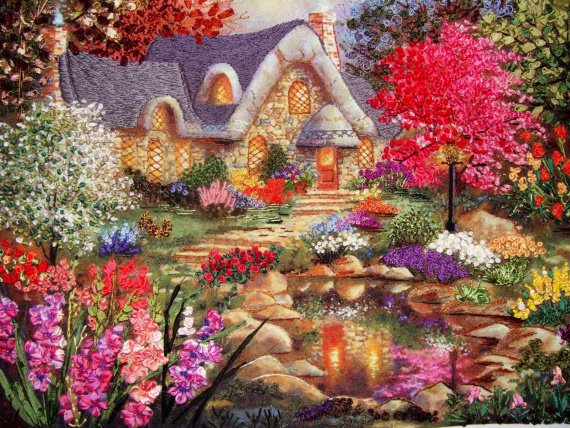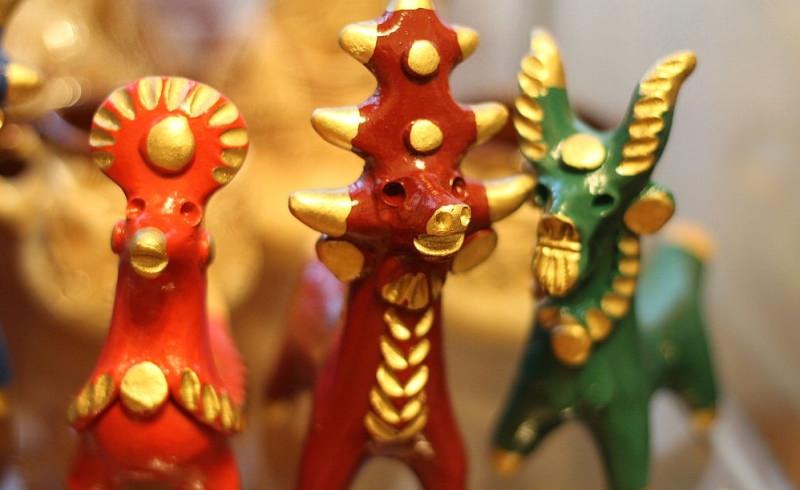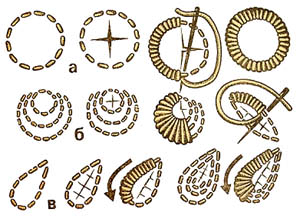
Sutures: types of simple and decorative stitches (pictures)
Content
During sewing or embroidering, various seams are used to create and decorate their work. Doing each of them is an art worth learning.
Decorative and finishing seams are designed to create a picture, decorate, connect details in a special way. The video of their performance seems incredibly complex, but it's worth trying, because the result is irresistible.


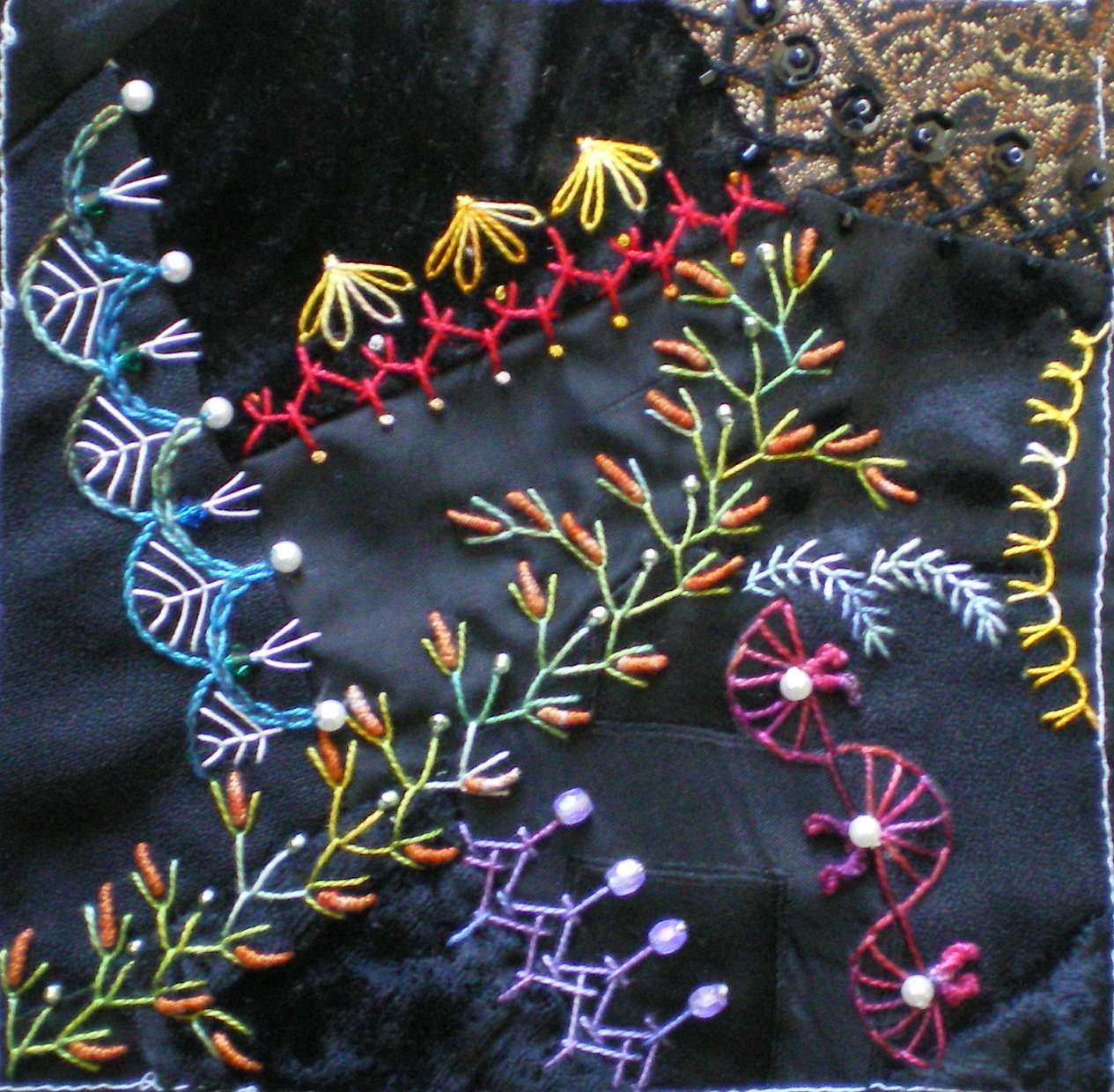
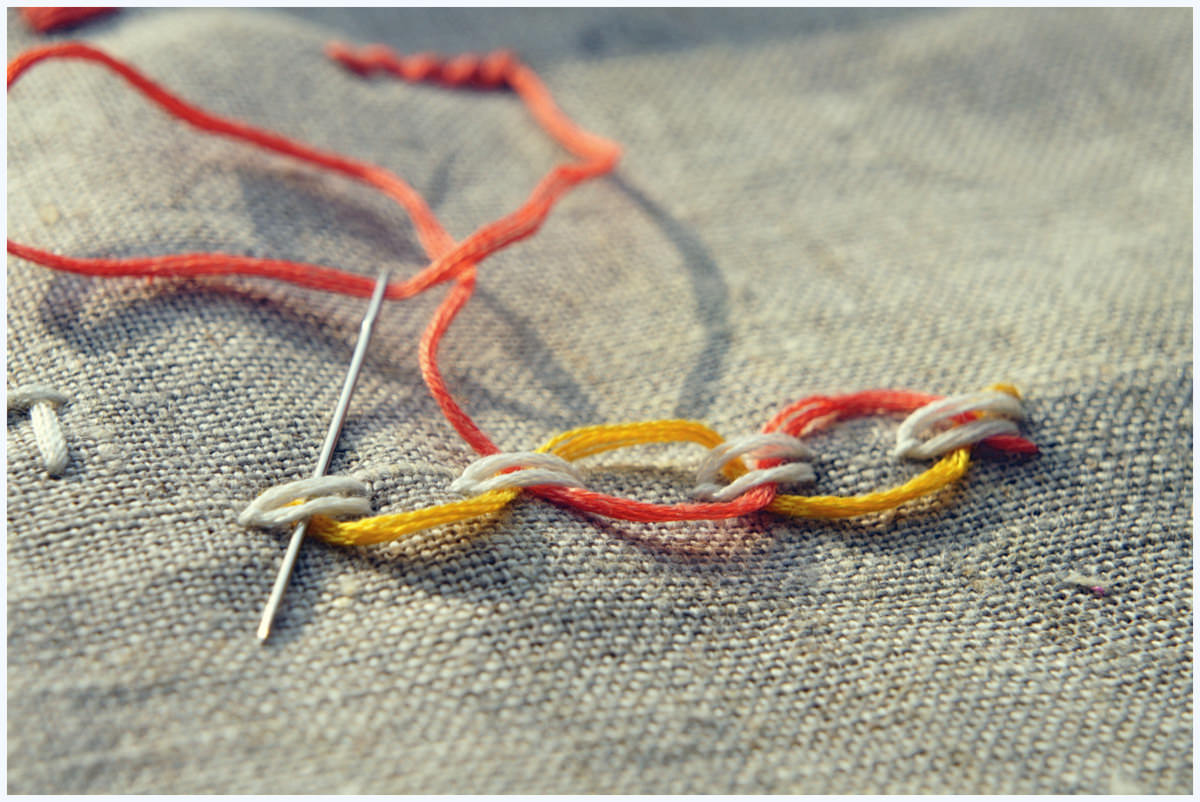
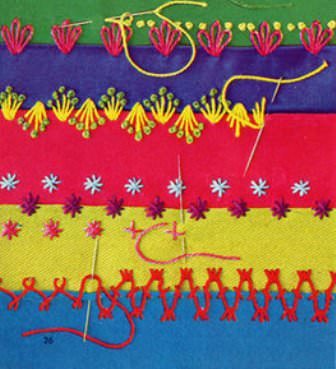
Types of seams
Seams can be:
- Simple;
- Looped;
- Embroidery.
Simple seams Similar types are used to join parts and when they are visible on the finished product.
Suture forward needle, the most simple, the needle goes forward, leaving an even line of thread.
Suture back the needle. The needle at work passes beyond the exit point of the thread from the wrong side. The stitch along the outside side goes to the side opposite to the direction of the seam. As a result, you get a convex thin seam, double from the wrong side.
. The technology is exactly the same as in the previous one,Only the stitch goes to the front side at about the middle of the height of the previous one. Face stitches are long, like lying on each other, purl - also inclined, but short.
The zigzag stitch is carried by technology back into the needle, however, the entrance to the underside is carried out alternately on two levels.
The seam of the corners is made similarly to the previous one,However, there is a repeat of the stitches twice, due to what the result is a three-dimensional. Due to the passage through two different heights, triangles are formed.
The lined eight. They are formed from two parallel stitch lines. They are carried out forward, but with a transition in height. From the wrong side, we obtain schematic figures.

Seam "forward needle" 
Seam "back needle" 
stalked seam 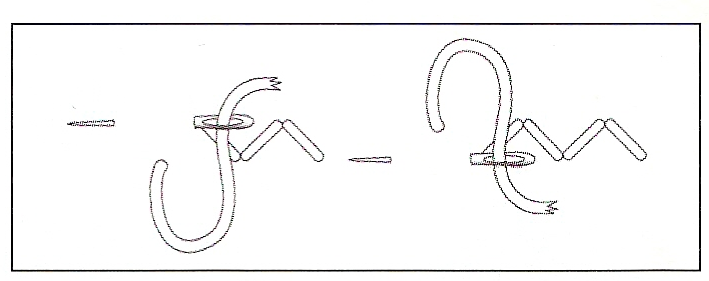
Seam "Zigzag" 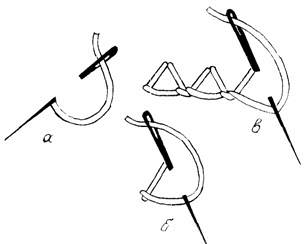
Seam "corners" 
"Eight" Very often used
Both machine and manual, they are simply necessary for stitching parts, parts and parts of the product.
The looped 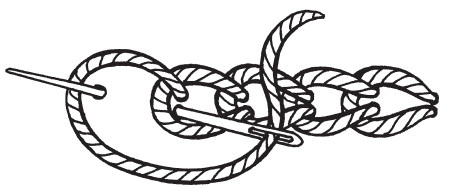
Tambour seamDecorative seams of this type are formed by convex loops. Loops in different ways cling to each other, for a working thread or as a basis, forming various drawings.
. The loop is sewn, the ends of which are locatedclose to each other. On the back side we stretch the thread to the edge of the loop, pull the thread out and form the next loop. As a result, we obtain wide decorative seams from the loops emerging from each other.
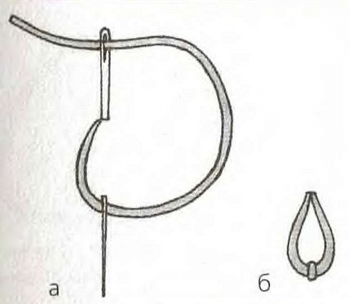
Seam "Loop" To create decorative elements, use decorative seams:
- a loop;
- Half loop;
- The eight on a platform;
- All kinds of stitches.
The seam loop consists of separately lying largeLoops. The entry and exit points of the thread are located side by side. The body of the loop is attached to the base. The hinges are empty and can be positioned as required. With the help of such loops it is possible to form various drawings.
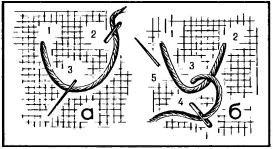
Seam "Half-loop" The seam of the half-loop is created from the semicircle from the loop. For this, the entry and exit points are carried to the desired width. Remains half of the loop, attached by a transverse stitch.
If
Tambour in a closed circle, thenLoop centers can form cross-eights. It is held as a lined eight with the difference that the eight go through the front.
The stitched seam of the palestriina. First, a sloping long stitch is performed, then the eyelet is wrapped around the lower part. The second loop wraps around the top. The thread goes to the wrong side and the next inclined stitch is executed at the same height as the previous one.
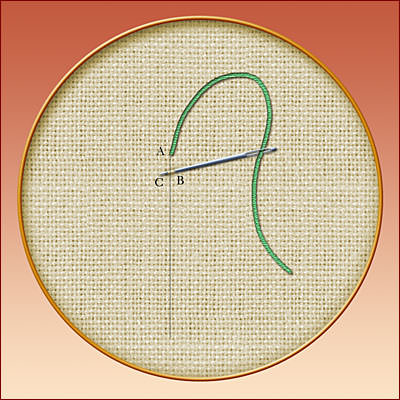
The "Palestrina" seam 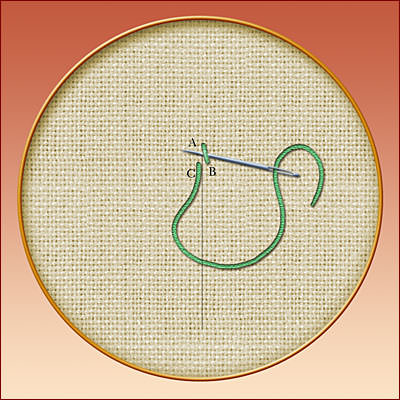
The "Palestrina" seam 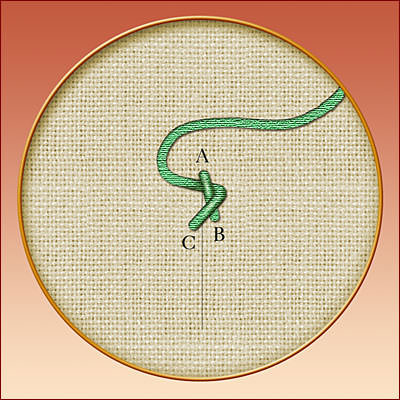
The "Palestrina" seam 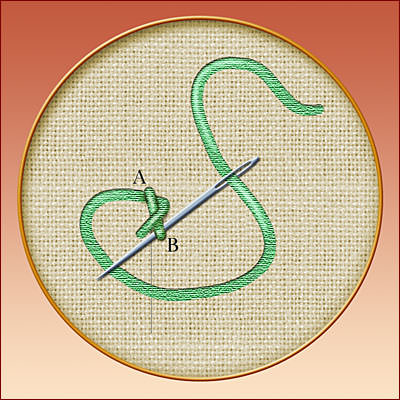
Shaw "Palestrina" Another subspecies of hingedSeams is a rare stitches seam. The needle runs from the top down, going to the front side just above the hinge. Each next stitch holds the previous one.
Similar to the previous one, the barbed seam is made. With the difference that the needle sticks from different sides of the already created loop, creating stitches in different directions from it. Such spines can consist of two, three or more stitches. If there are many, the spines become like stars or snowflakes. If you perform it in 4 stitches and join together the stitches of neighboring thorns, you will get a pattern in the form of a row of rhombuses, such a suture is called a rhombic.
The seam of the nodule is carried out by overwhelming the workerThreads around the needle. The needle goes to the front and leaves back almost at the same point, leaving behind a twisted bundle of thread. These kinds of them look like a sequence of knots, hence the name.
The rococo suture. The needle makes a small stitch from the wrong side, remaining in the fabric. At the tip of the needle, several turns of thread are wound. Working thread stretches through these coils. The second pass of the thread through the turns with the passage through the inside reinforces the stitch.
The stitching seam with the flooring is performed in 2 stages. The first stage is embroidered with 2 parallel strips of the base. Embroidery is a way back needle. Between the seams there should be no gap. The second stage is the laying of loops perpendicular to the strips. The needle goes on the wrong side, going outside under the lines of the base and fixing the loop of the previous stitches. We get a convex strip of decorative finish.

Rare stitches 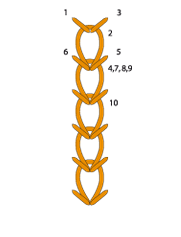
Stitched seam "thorns" 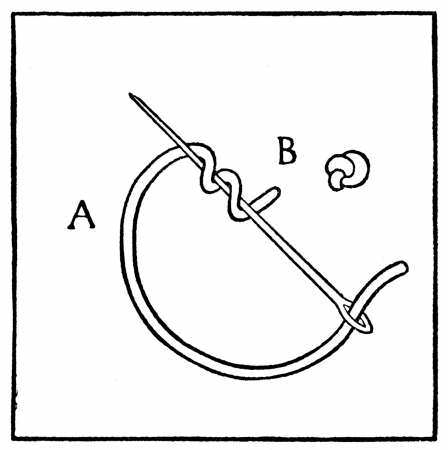
Seam "Nodules" 
Rococo seam 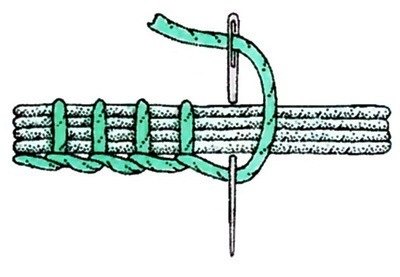
Hinged seam with flooring
Counting seams
With counting embroidery types of seams are not so diverse. The main type of embroidery when the account is a cross, hence the types of stitches:
- Cross vertically;
- Cross diagonally;
- Cross horizontally.
The formation of these embroidery sutures is done in the process of embroidery and depends on the direction of the crosses.
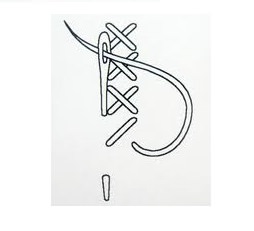
Vertical suture with a cross 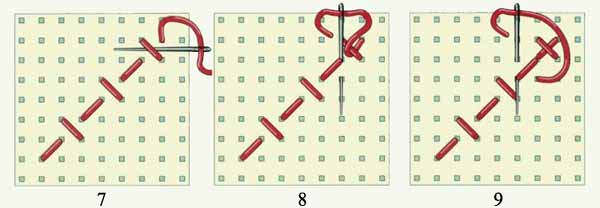
Diagonal seam with a cross 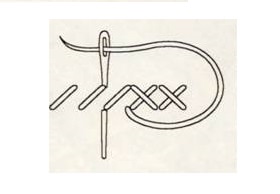
Horizontal seam with a cross The same type of seams include a square and a painting. Both are performed by the elements forward of the needle, and the pattern is formed after a double pass through one place.
smooth surface
For smoothing decorative seams are most characteristic and many looped seams can also be considered as elements
.
A simple two-sided smooth surface when the needle constantly leaves on the front side from one side of the picture. With this embroidery, the same pattern is formed on both the front and the underside.
When smoothing with a flooring, the contour is first embroidered, then it is filled with stitches and only then the filling of the contour passes along them. The lower and upper layers must be perpendicular.
Filling with embroidery shapes canGo through long and short stitches, while they lie in the same direction. If you change the length of stitches in the rows and embroider different rows with different colors, you will get a seam with infusion of flowers.
Can serve to fill the shape they have formed, first closes the contour. It looks like a solid, bright element.
Festons and a smooth roller are performed in the same way asAnd a seam stitch with a flooring. For festoons first, the base is embroidered with a discontinuous seam forward with a needle in the form of semicircles. For the platen 2 free threads are taken, laid out according to the drawing. In both cases, the top layer is performed by loops fixed to each other. Such decorative seams are often used to decorate tablecloths and napkins.
The most common method of embroidering is smooth -darn. A series of parallel stitches is performed, then the direction changes to perpendicular and each of them is intertwined between the existing ones, as in a fabric.
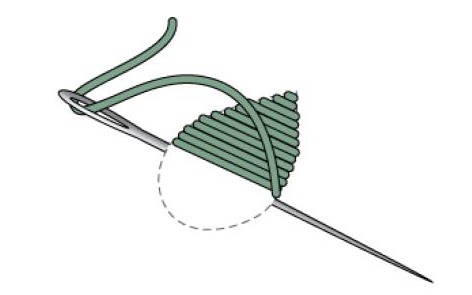
Double-sided surface 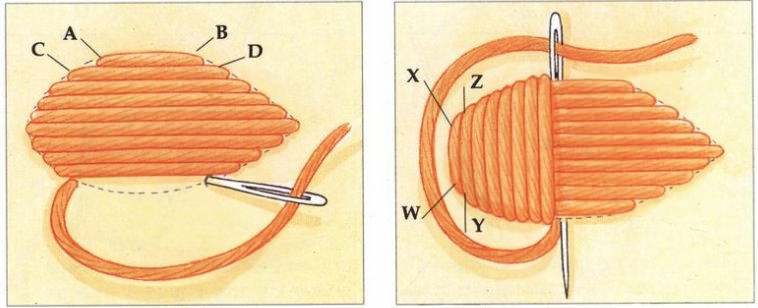
Smoothing with planking 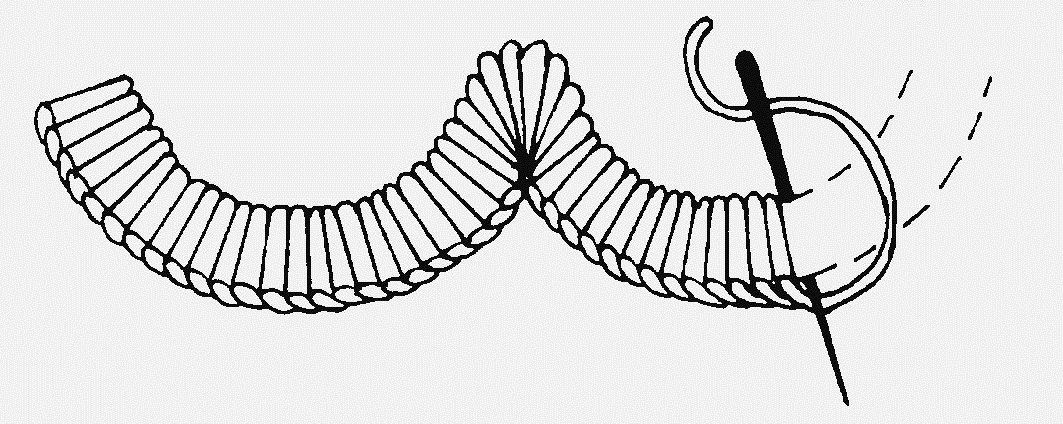
Festoon Seam 
Gladkovoy roller 
Stitch "Shtopka" Decorative filling stitches for embroidery with a smooth surface This includes such types of seams:
- Fish bone;
- Cretan;
- Half loop.
The seam of a half loop for smoothing differs only in frequencyThe application of arcs. If for embroidery sutures rather large distances between them were allowed, then when embroidering with a smooth surface this distance should not be at all.
A fish bone can be of two kinds. In the first case, these are 2 parts of a simple two-side surface, connected together. In each part, the bough is embroidered in its direction. At the junction of the stitches, a zigzag is formed. They are performed alternately - one way and the other. Embossed seam fish bone is performed similarly, with the only difference that the stitches of different sides do not touch, but are laid on each other.
The Cretan seam is performed in the same way as the fish bone, only at the end of each stitch is it done not just by puncturing the needle, but by fastening the loop. Combination of two-sided smoothness and a looped seam.
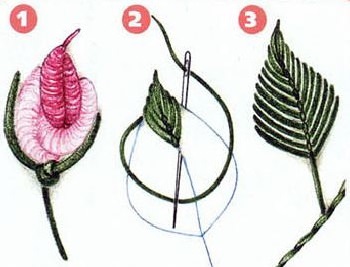
Seam stitch 
Seam «Fish bone» 
Chinese seam Proreznaya expanse 
Proreznaya smoothnessEta smooth surface creates incrediblyDelicate and beautiful embroidery patterns, used as finishes for beds, accessories and clothing. The inner part of the pattern is cut out, and the edges are looped. English recesses and more complicated execution of intricate drawings - the Richelieu are made with a glacial roller and a roller with a pico.
It is advisable not to make a cut drawingCompletely until the hole processing is performed. On the edge of the future slot, the needle is stitched forward. Then on top of it is applied a suture joint with a roller.
All seams require attention, patience and experience. So that everything turned out, it's enough just to want.
